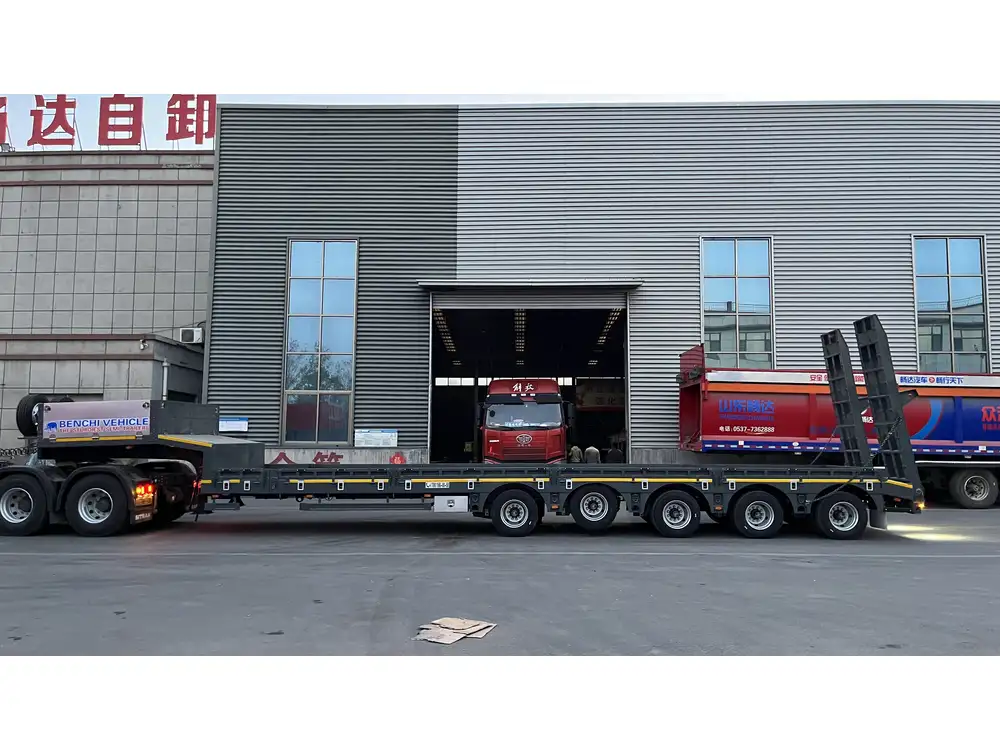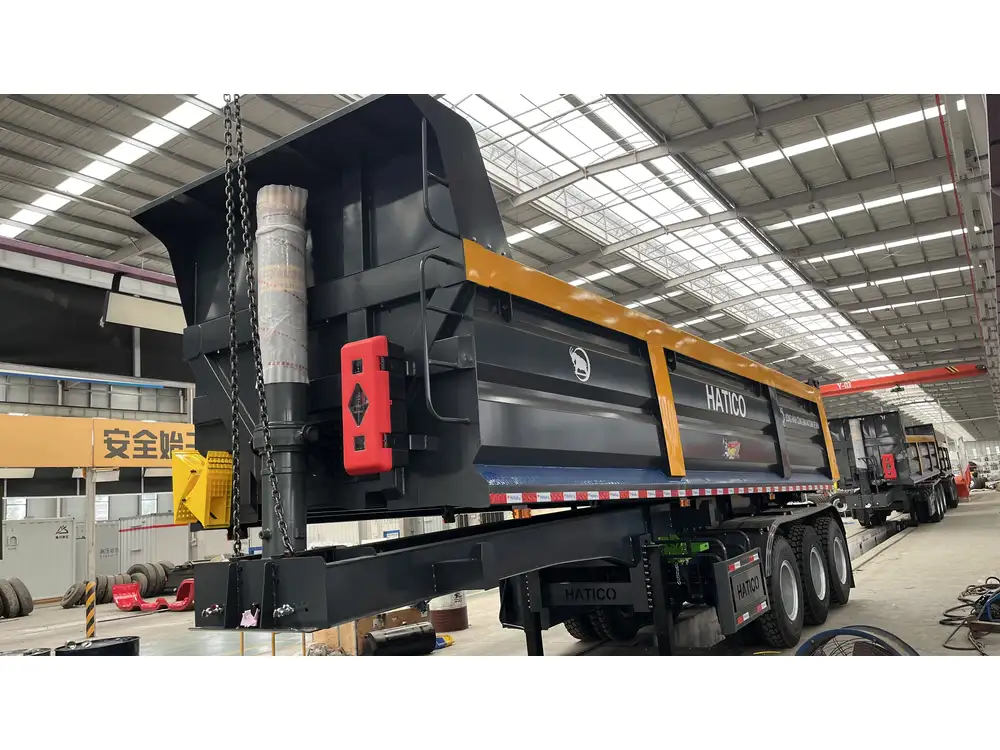Parking a semi-trailer can be a daunting task, especially for those new to operating large vehicles. Whether you’re delivering goods or managing logistics, knowing how to reverse park a semi-trailer effectively is crucial for safety and efficiency. In this guide, we will delve deep into the techniques, best practices, and common pitfalls associated with reverse parking a semi-trailer, as well as provide comprehensive strategies to enhance your skills.
Understanding the Basics of Reverse Parking
The Importance of Space Awareness
Before entering the cab of a semi-trailer, it’s imperative to understand the dynamics of space awareness. When reversing, you’re not just maneuvering a truck; you’re handling a vehicle that can exceed 70 feet in length. Awareness of your surroundings—beyond just your immediate path—is essential. This includes monitoring weather conditions, checking for pedestrians, and being cognizant of other vehicles.

Key Components of Your Vehicle
A semi-trailer consists of a tractor unit and a trailer. Understanding how these components interact is vital. The trailer turns differently than the cab, especially when reversing. Familiarize yourself with:
- Tandem Axles: The wheels at the rear of the trailer that pivot, affecting the trailer’s trajectory.
- Kingpin and Fifth Wheel: The connection point between the trailer and tractor, crucial for stability during maneuvers.
Step-by-Step Guide on How to Reverse Park a Semi-Trailer
Pre-Maneuver Preparation
Positioning the Vehicle:
- Approach the parking space at a 45-degree angle. This angle provides better visibility and a more manageable turn radius.
Utilize Mirrors Effectively:
- Adjust your mirrors for optimal visibility. Use both left and right mirrors to track your progress—consistently checking blind spots can prevent accidents.
Communicate with Spotters:
- If available, use a spotter. Clear communication will help in averting mishaps and streamline the parking process.

Executing the Reverse Park
Starting the Maneuver
Engage the Reverse Gear:
- Ensure you’re in a safe position before shifting into reverse.
Begin Reversing:
- Slowly start backing up while checking your mirrors. Aim to align the trailer with the target parking space.
Angling the Trailer
Turning the Steering Wheel:
- As the rear of the trailer begins to enter the space, turn the steering wheel towards the side you wish the trailer to go; for instance, if aiming to park on the right, turn the wheel right.
Watch the Trailer Path:
- Monitor the trailer’s angle closely. It’s crucial to keep the trailer straight during the maneuver, as the further it turns, the more difficult it becomes to control.

Final Adjustments
Straighten Out:
- Once the trailer is partially in the parking space, straighten the steering wheel to align the cab with the trailer to complete the maneuver.
Control the Speed:
- Always maintain a slow speed while reversing. Fine adjustments may be required, which is easier at lower speeds.
Final Position Check:
- Ensure the trailer is parked within the designated lines. Engaging the parking brake is essential before exiting the cab.
Common Mistakes and How to Avoid Them
Poor Space Judgement
Many drivers underestimate the space required for a semi-trailer. Here are tips to ensure optimal space judgement:
| Mistake | Prevention Technique |
|---|---|
| Not assessing the parking area properly | Walk the area before parking. |
| Ignoring obstacles in the vicinity | Take time to visually check for obstacles. |

Misusing Mirrors
Mirrors are your best friend when reversing a semi-trailer. Common pitfalls include:
| Mistake | Prevention Technique |
|---|---|
| Not adjusting mirrors | Adjust mirrors based on your seating position. |
| Focusing on one mirror only | Use both mirrors; switch focus as necessary. |
Forgetting Blind Spots
Blind spots on a semi-trailer can be extensive. Always recognize the necessity of:
- Performing a 360-degree check before reversing.
- Using a spotter to advise you of hidden hazards.
Advanced Techniques for Professionals
Once the basics of reverse parking a semi-trailer have been mastered, drivers can explore advanced techniques to enhance their skills further.

The 90-Degree Reverse Park
For tight locations, like urban environments or distribution centers, mastering the 90-degree reverse park can be transformative:
- Approach the parking space from a wider angle—ideally, 60 degrees.
- As you begin to reverse, turn the steering wheel quickly towards the target space.
- Adjust the angle as needed, while constantly monitoring your surroundings through the mirrors.
J-Hook Method
For navigating sharp corners or wider parking lots, the J-Hook method involves:
- Pulling forward past the space and straightening the cab.
- Turning the steering wheel sharply while reversing, forming a ‘J’ shape, allowing the trailer to swing into the parking area.
Using Technology for Assistance
Moreover, as technology progresses, many semi-trailers now come equipped with advanced systems for backing maneuvers:
- 360-Degree Camera Systems: Providing full visibility around the vehicle.
- Obstacle Detection Sensors: Alerting drivers to unseen dangers while reversing.

FAQs on Reverse Parking a Semi-Trailer
How can I improve my reversing skills?
Practice remains the core method to enhance reversing skills. Start in open spaces, progressively working to more confined areas. Consider utilizing simulators available at some training centers.
What if I feel uncomfortable reversing a trailer?
Being uncomfortable when reversing is commonplace. Take your time, breaks when needed, and consider professional instruction to build confidence.

Is there any regulation regarding parking semi-trailers?
Regulations vary by region. Always check local laws regarding parking regulations for commercial vehicles to ensure compliance.
Conclusion
Mastering how to reverse park a semi-trailer is not just about skill—it’s about developing a keen sense of spatial awareness, understanding your vehicle’s mechanics, and practicing regularly. By following this comprehensive guide and utilizing advanced techniques, you’ll position yourself as a safer, more efficient driver in the logistics and transportation industry.
With continuous practice, a command over these methods will transform the seemingly daunting task of reversing a semi-trailer into a routine operation, enhancing not just your own efficiency, but contributing positively to the safety of all road users.



